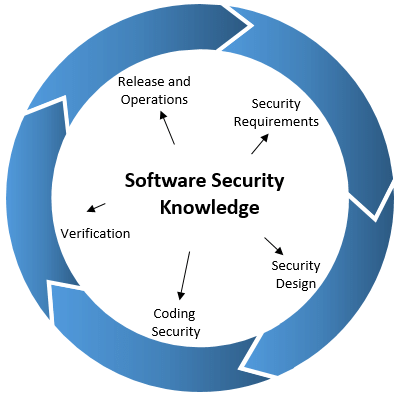Software Engineering Practices
Hey there, welcome back to the bunker! Today, we're diving into some common
software engineering practices. We'll break down what they are, why they're
crucial, and wrap up with why they matter. Let's get started!
Agile Development:
- Agile Development is a software development methodology known by iterative and incremental development, where collaboration between self-organizing and cross-functional teams is key. Agile emphasizes the adaptability and flexibility to change in the development process.
- Agile offers various benefits: improved collaboration, increased customer satisfaction, and greater adaptability to changing requirements. Organizations can improve their ability to deliver quality software products that meet the needs of their users.
- Without Agile, projects may face challenges such as rigid coupling from the initial requirements, longer development cycles, and higher risk of shipping a product that doesn't meet user expectations.
"Agile is not just a methodology; it’s a mindset shift, a culture change, and in many cases, a complete transformation of how teams collaborate."
Test-Driven Development (TDD):
- TDD is a software development approach where tests are written before code. Developers write small units of code to pass tests, making more maintainable and reliable code.
- Some advantages of it include: solid, bug-free code and boosts developer confidence in their software.
- Without TDD, codebases suffer from untested code, something that leads to a higher bug density and longer debugging cycles, ultimately leaving developers less confident about their codebase.
"Writing tests is like flossing — you know you should do it, but somehow you never do unless you're at the dentist."
Continuous Integration (CI):
- Continuous Integration is a development practice where developers frequently integrate code into a shared repository. Every single commit is then automatically built and tested, facilitating teams to detect integration errors quickly.
- CI facilitates the integration and testing of our code, leading to more frequent, reliable and stable releases.
- If neglected, development teams can face challenges with manual and ineffective integration processes, something that normally causes an increased risk of errors and difficulty in maintaining code consistency across the project.
"Continuous integration is the practice of merging all developers' working copies to a shared mainline several times a day."
Continuous Deployment (CD):
- Continuous Deployment is other development practice where code is automatically deployed to production environments.
- Continuous Deployment enables companies to deliver to clients quicker and stay competitive in the market, while being always ready to ship reliable code, at any time.
- Without CD, organizations can face various bottlenecks in the deployment pipeline, resulting in slower, less frequent release cycles.
"Continuous Deployment enables rapid, reliable software delivery, empowering teams to iterate quickly and meet customer demands effectively."
Code Reviews:
- Code reviews involve peers examining code for quality, correctness, and adherence to standards. Pair programming consists of two developers collaborating live on the same code. Both focus on improving existing and new code, knowledge sharing, and less bugs.
- Code reviews and pair programming cultivates a culture of collaboration and continuous improvement, eventually resulting in quality software products.
- Without them, companies could overlook issues, develop slower, and having an increased technical debt.
"+2 eyes is better than 2."
6. Source Control:
- The most important thing in software development. Source control is a system that tracks changes to files over time, allowing multiple contributors to collaborate on a project simultaneously. It maintains a history of revisions, enabling rollbacks to previous revisions, enables you to use CI/CD, among other several benefits.
-
Without version control, managing changes becomes
impossiblechaotic. It's hard to track who made what, leading to conflicts, loss of data, and confusion among team members. Collaboration becomesimpossibleodd and chaotic,destroyingaffecting productivity. How do you collaborate without source control? You send the whole project to google drive every time you make a change? Hell nah.
- Version control is a fundamental tool for modern software development, providing transparency, collaboration, and reliability throughout the development process. It is essential for teams aiming to facilitate their workflow.
"Just do it."
Security:
- Security means the measures taken to protect software and user data from unauthorized access, breaches, and malicious attacks. It also means implementing encryption, authentication, access controls, and other security protocols to ensure the confidentiality, integrity, and availability of information.
- Having good security in place is fundamental for protecting our software. Prioritizing security can bring mitigated risks, protected sensitive information, and increased trust with users.
- Without security, software and data are vulnerable to exploitation by hackers, leading to data breaches, reputational damage, and legal consequences.
"Implementing robust security measures is vital for protecting software and user data from malicious attacks."
Documentation:
- Documentation should guide on how to use, maintain, and understand software. Good documentation makes it less complex to understand code, facilitates collaboration, and assures maintainability in the long term.
- Documentation makes codebases more maintainable and the onboard new team members is much simpler.
- Without documentation, users struggle to understand how to use the software correctly.
"Documentation makes it easier to maintain and onboard new team members."
System Integration:
- System integration combines different subsystems or components into a unified system. It ensures that these components work together to achieve the desired functionality of the system.
- System integration looks for interaction between components, enabling scalability and allowing adaptability to business needs and technological advancements.
- Lackin' system integration can lead to different components operate in isolation, leading to limited functionality. Users may experience difficulties in accessing information , resulting in frustration.
Domain-Driven Design (DDD):
- DDD is an approach that focuses on understanding and modeling the domain of the problem being solved. Its known by involving collaboration between domain experts and software developers to create a shared understanding of the problem domain and develop software solutions.
- Aligning software models with business domains ensures that solutions meet business needs. DDD promotes a deeper understanding of the problem domain and develops the software that is aligned with business objectives.
- Without DDD, software projects may suffer from misalignment from the original business domain, causing ineffective solutions and failing to meet the actual needs of users. Developers may struggle to really understanding the problem domain, resulting in poorly designed software.
Quiz:
Conclusion:
- Code Reviews and Source Control encourage teamwork.
- Documentation makes code more maintainable.
- System Integration brings everything together.
- Domain-Driven Design keeps solutions rooted in real-world needs.
Related Resources:
Thanks for joining us in the bunker today! Keep coding, stay curious, and
never stop learning. We've covered some crucial software engineering
practices that shape the way we build software. If you have questions or
insights to share, drop a comment below. Let's keep the conversation going
:)


















Comments